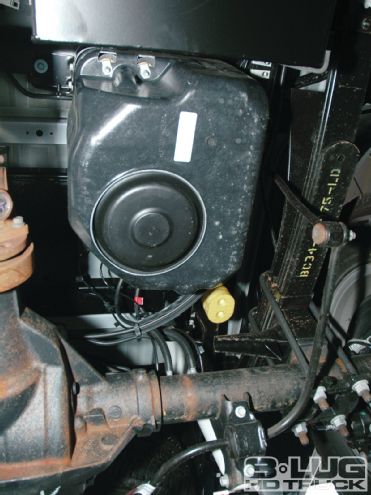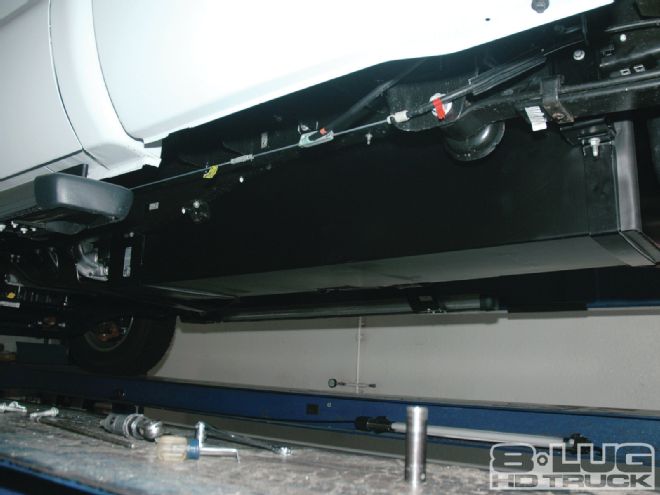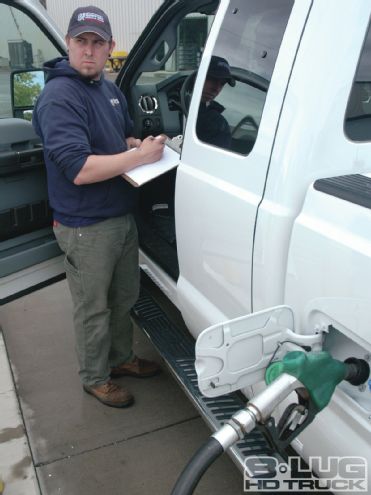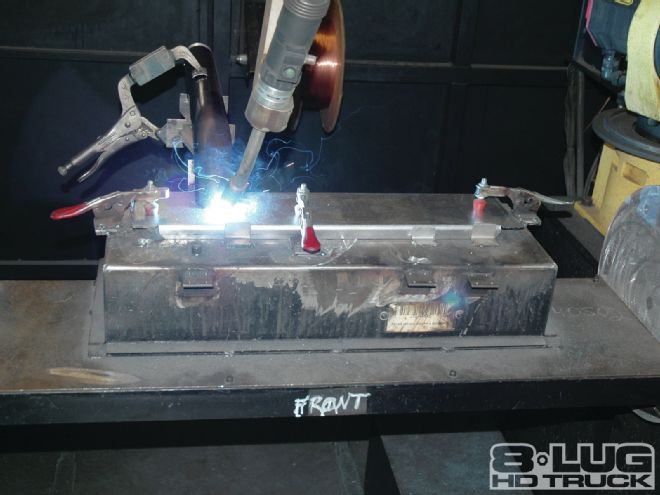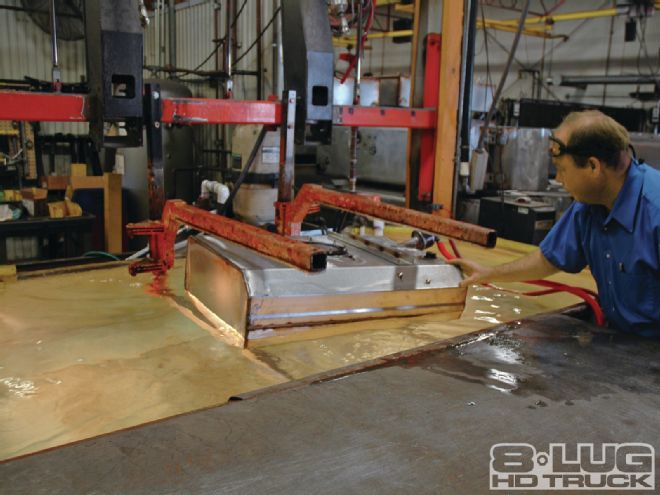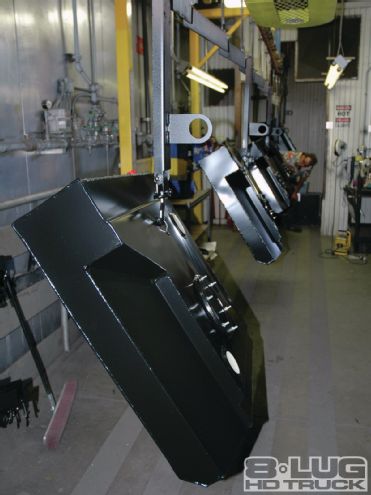There must have been a reason why you chose a Ford F-350 longbed. Was it more cargo space or a bigger trailer? Or maybe a fifth-wheel or a camper? You wanted to haul more toys and still have room for the dog and kids? In any case, driving from home to the lake or desert on a single tank of diesel might have been an assumed impossibility in the past. Not anymore. Thanks to the addition of the Diesel Emission Fluid tank (DEF) just in front of the rear axle, the molded plastic factory fuel tank has been reduced to a petite 36 gallons. At a realistic 9 mpg (if you’re hauling a big, 10,000- to 20,000-pound fifth-wheel), that’s only going to take you 324 miles before that worrisome Low Fuel light blinks on.

| How much more fuel would you like to carry?
Transfer Flow, one the largest designers and manufacturers of aftermarket and OEM fuel tanks, has a knack for getting the most out of the space available. Following the popularity of its 50-gallon replacement tank for the shortbed crew cab, it has just introduced a 58-gallon replacement fuel system for F-350 extended-cab and crew cab longbed—for both four-wheel-drive and two-wheel-drive models. We took the opportunity to watch the first one off the assembly line being installed. The DEF tank is a totally independent unit. It is not moved nor altered.
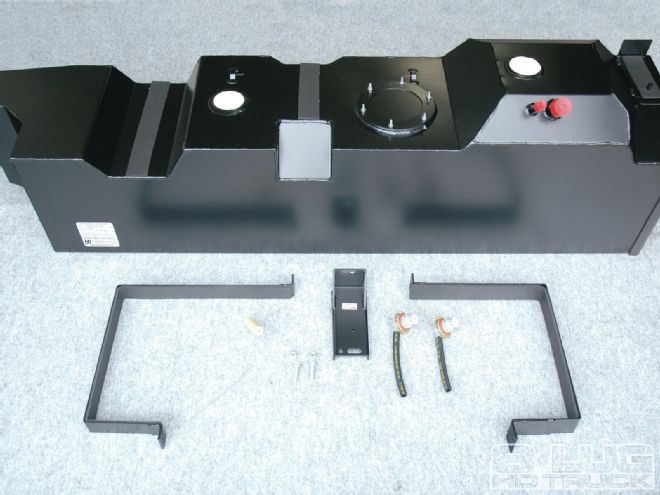
| 01. Though it may not look that big, the new Transfer Flow 58-gallon replacement tank for the ’11 Ford longbed signifcantly extends your range.
A brand-new F-350 6.7L Power Stroke was already on the rack at Transfer Flow’s modern installation facilities in Chico, California. Eric Harper walked us through the procedure. The first step was to loosen the fill and vent hoses and pull them off. The tank was securely supported with a hydraulic jack, and the OEM tank mounting straps were removed. It was then lowered about 6 inches—just enough for Eric to reach up on top and disconnect the supply and return hoses and the wiring plug from the OEM sending unit. Since you can’t see these on top of the tank, step-by-step instructions with photos are included in the detailed installation manual.

| 02. A new float arm, steel retaining straps, two rollover valves, and a single bracket are all that’s needed for the installation.
With the factory unit on the ground, the fuel sender was removed and a new float arm was attached to give a more accurate fuel level calibration due to the shape of the new tank. Two new rollover valves were fitted. Eric used soapy water and compressed air to double-check the new seal on the sending unit, which is secured with six bolts.
Installing the Transfer Flow tank is straightforward. It weighs about 153 pounds, so a proper jack is necessary. Many of the factory bolts and bolt clips are reused for the new mounting straps. No drilling is required. A single bracket is needed on the outside rear. This is attached to the frame using the existing emergency brake clamp bolts and factory holes with bolt clips.

| 12. Using a hydraulic jack, the new tank was lifted into place.
Being careful not to crimp anything, the fill, vent, supply, and return hoses were connected and clamps tightened. The tank was then raised fully into position and new mounting straps were installed.
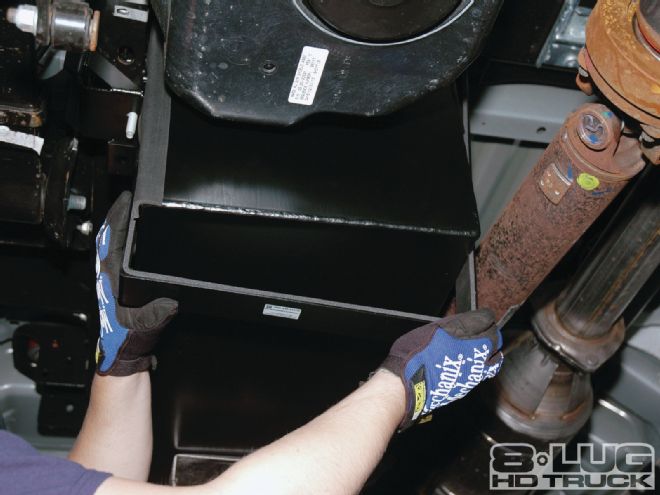
| 13. Rubber-padded steel straps hold the tank securely in place.
During our visit, we took an impressive tour of the Transfer Flow factory. All tanks, components, and finished products are engineered, bent, formed, and welded at the Chico plant. Robots do much of the welding. All units must go through a pressurized leak test, fully submerged in a water bath before they are washed, dried, and powdercoated. New designs, like this 58-gallon replacement system, must go through rigorous testing, including being dropped, full of water, from a 35-foot tower onto a steel plate on a concrete-reinforced platform.

| 14. New retaining straps were tightened and torqued to Transfer Flow specifcations.
The 58-gallon replacement fuel system has an MSRP of $977.10. Installation at the Transfer Flow factory in Chico is $200. Transfer Flow fuel systems are covered by a three-year or 60,000-mile limited warranty. The company has a network of dealers nationwide that can install and service its products.
This replacement tank won’t give you better mileage, but on long trips, it certainly will significantly extend your range, allowing you to stop at more economical or convenient travel centers. It’s a valuable upgrade to your heavy-duty eight-lug Ford.
 | 01. Though it may not look that big, the new Transfer Flow 58-gallon replacement tank for the ’11 Ford longbed signifcantly extends your range.
A brand-new F-350 6.7L Power Stroke was already on the rack at Transfer Flow’s modern installation facilities in Chico, California. Eric Harper walked us through the procedure. The first step was to loosen the fill and vent hoses and pull them off. The tank was securely supported with a hydraulic jack, and the OEM tank mounting straps were removed. It was then lowered about 6 inches—just enough for Eric to reach up on top and disconnect the supply and return hoses and the wiring plug from the OEM sending unit. Since you can’t see these on top of the tank, step-by-step instructions with photos are included in the detailed installation manual.
| 01. Though it may not look that big, the new Transfer Flow 58-gallon replacement tank for the ’11 Ford longbed signifcantly extends your range.
A brand-new F-350 6.7L Power Stroke was already on the rack at Transfer Flow’s modern installation facilities in Chico, California. Eric Harper walked us through the procedure. The first step was to loosen the fill and vent hoses and pull them off. The tank was securely supported with a hydraulic jack, and the OEM tank mounting straps were removed. It was then lowered about 6 inches—just enough for Eric to reach up on top and disconnect the supply and return hoses and the wiring plug from the OEM sending unit. Since you can’t see these on top of the tank, step-by-step instructions with photos are included in the detailed installation manual.
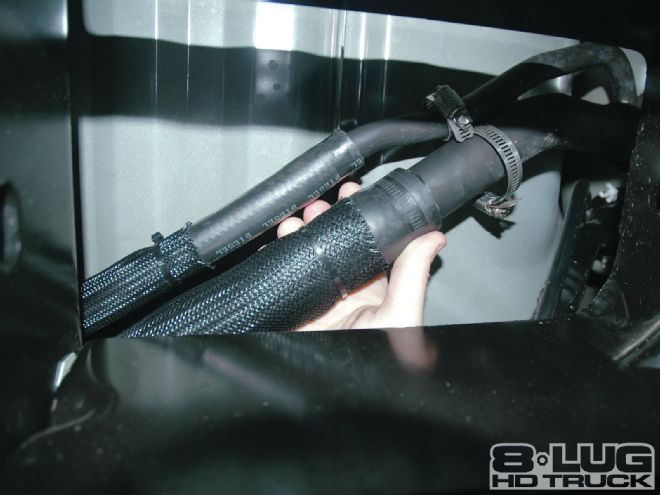
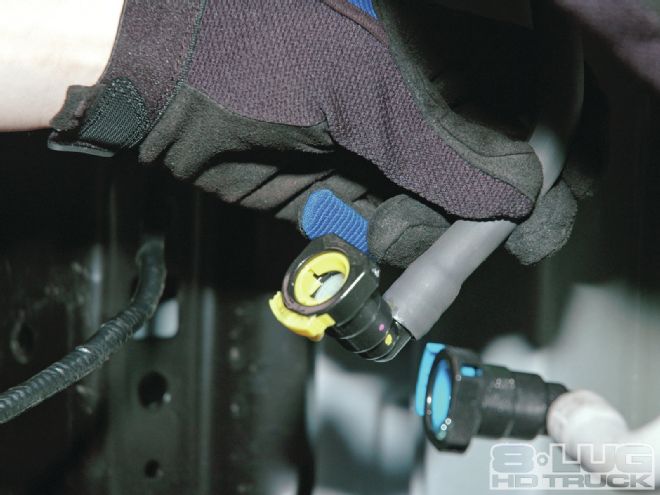
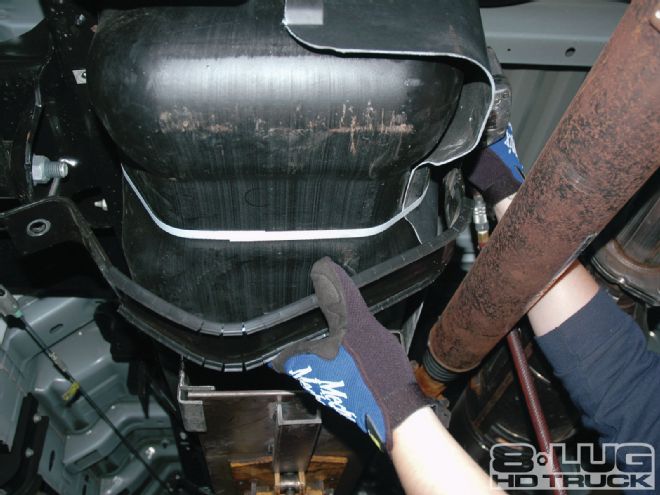
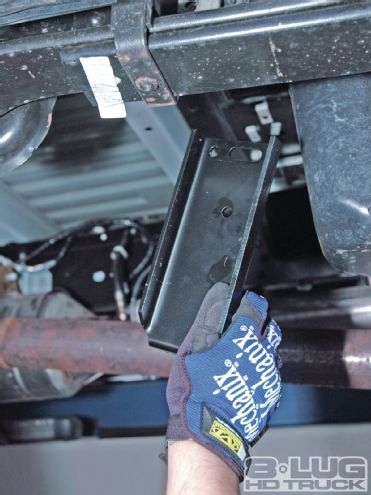
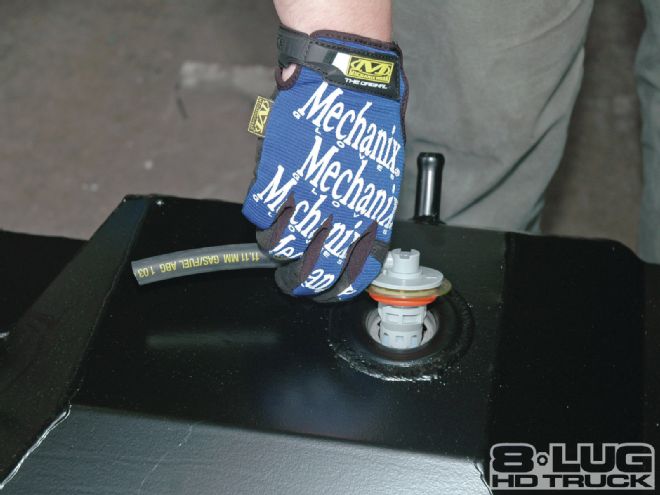
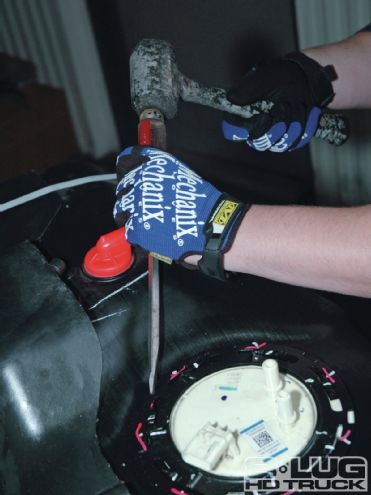
 | 13. Rubber-padded steel straps hold the tank securely in place.
During our visit, we took an impressive tour of the Transfer Flow factory. All tanks, components, and finished products are engineered, bent, formed, and welded at the Chico plant. Robots do much of the welding. All units must go through a pressurized leak test, fully submerged in a water bath before they are washed, dried, and powdercoated. New designs, like this 58-gallon replacement system, must go through rigorous testing, including being dropped, full of water, from a 35-foot tower onto a steel plate on a concrete-reinforced platform.
| 13. Rubber-padded steel straps hold the tank securely in place.
During our visit, we took an impressive tour of the Transfer Flow factory. All tanks, components, and finished products are engineered, bent, formed, and welded at the Chico plant. Robots do much of the welding. All units must go through a pressurized leak test, fully submerged in a water bath before they are washed, dried, and powdercoated. New designs, like this 58-gallon replacement system, must go through rigorous testing, including being dropped, full of water, from a 35-foot tower onto a steel plate on a concrete-reinforced platform.
